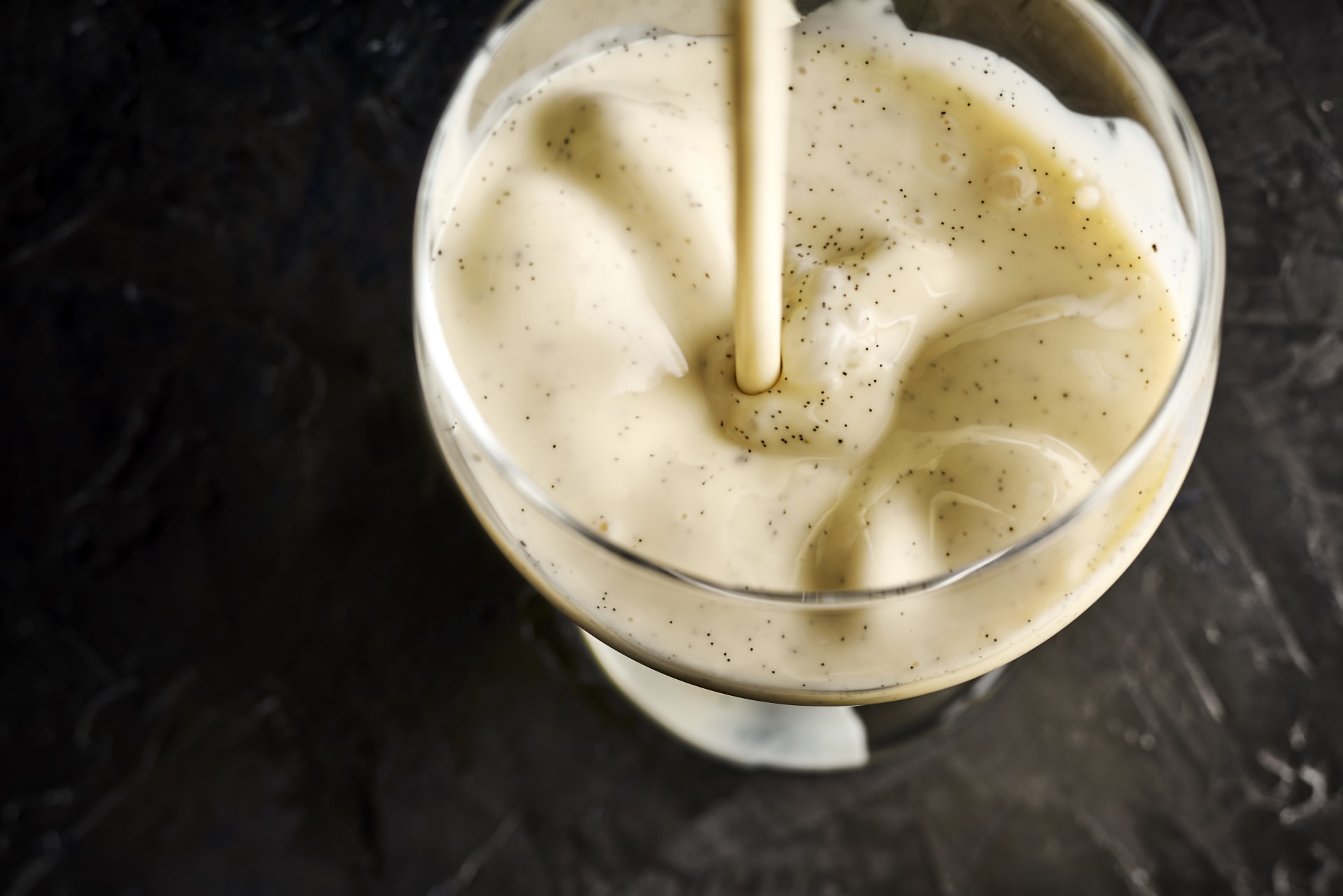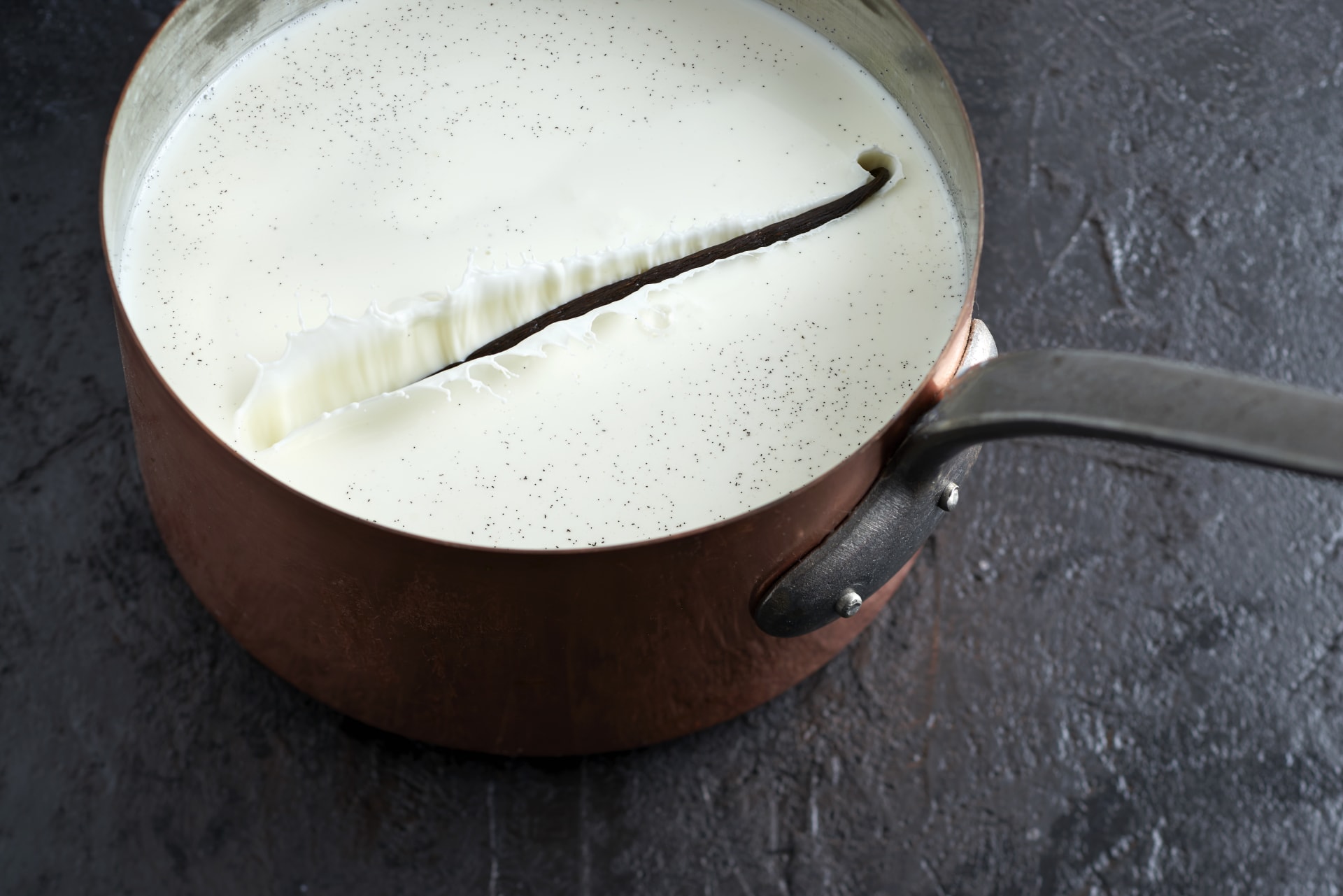You are using an outdated browser. Please upgrade your browser to improve your experience and security.
Crème anglaise
Contents :
Crème anglaise is one of pastry-making’s most frequently used custards. It can be found in the famous floating island dessert and caramel rice puddings. It’s sometimes eaten on its own, flavored with vanilla, or served with a fruit coulis. It’s served with cakes and other chocolate desserts such as brownies. And last but not least, it makes delicious ice creams.
Find out how to make crème anglaise, as well as a few chocolate recipes where it plays a key role. We answer all the questions you’ve always wanted to ask so you can learn how to make a great crème anglaise or perfect your skills.

Basic crème anglaise
This basic crème anglaise custard can be made in one go, but it is better to carry out the first step several hours in advance and leave it to rest for the recommended time. You can use it as it is or incorporate it into other creams, as you will see below.
Crème anglaise ingredients
Basic crème anglaise has four ingredients:
- 200g egg yolks
- 100g caster sugar
- 500g UHT cream (35% fat)
- 500g whole UHT milk
In some cases, it’s best not to use cream. If you wish, you can replace the UHT 35% cream with the same amount of UHT whole milk.
For a very thick custard, increase the amount of eggs. It’s also possible to reduce the amount of sugar or partially replace it with a sweetener.
If you want your crème anglaise to have a particular taste, you can flavor the milk in advance with:
- a vanilla bean split lengthwise
- a coffee or tea drink
- cocoa
- couverture chocolate
- alcohol, such as a liquor
- spices, such as cinnamon
- citrus fruits, such as orange
- nuts, such as pistachios
Preparing your custard
To make your custard a success, carefully follow these steps:
- Mix the egg yolks with the sugar in a container, taking care not to blanch them.
- Leave the mixture to stand for 3-4 hours. This will prevent the eggs from coagulating (forming lumps), as the lecithin they contain will be less sensitive to heat.
- Pour the cream and milk into a saucepan and bring to a boil.
- Pour the cream and milk into the egg yolk and sugar mixture.
- Mix the two together and transfer them into a saucepan.
- Cook at 180/185°F (82/84°C), stirring all the while. Getting the right temperature and stirring are vital in this recipe.
- Pass the mixture through a fine strainer.
- Quickly cool your crème anglaise, for example by placing your pan in a bowl filled with ice cubes.
- Use the crème anglaise straight away or immediately store it in the refrigerator.
If you want to keep your crème anglaise for later, you need to cool it quickly. If you want to use it immediately, you don’t necessarily have to cool it straight away - it all depends on your recipe. Crème anglaise is sometimes served hot.

Frequently asked questions about crème anglaise
Below we answer some frequently asked questions about how to make your crème anglaise work every time.
What’s the difference between crème pâtissière and crème anglaise?
Like crème anglaise, crème pâtissière is made of whole milk, egg yolks and sugar. However, cornstarch or flour is added for a thicker result.
If you’re wondering how to turn a crème pâtissière into crème anglaise, be aware that it can be tricky. However, it’s possible to turn a crème anglaise into a crème pâtissière.
How do you know if a crème anglaise is ready?
People often ask this question, especially if they want to know how to make a crème anglaise without a thermometer. To find out if your crème anglaise is ready, one tip is to use the low-heat “à la nappe” technique.
This involves constantly stirring your crème anglaise with a spatula. You should occasionally draw a line across the spatula with your finger and see how long it takes for the crème anglaise to cover it over again. The longer you cook, the longer it will take for your crème anglaise to cover the spatula again. When your line doesn’t get covered over, your crème anglaise is ready.
When should I put the crème anglaise in the refrigerator?
If you don’t want to use your crème anglaise immediately, you should place it in the refrigerator straightaway.
How do I stop ruining my crème anglaise?
To avoid messing up your crème anglaise, it’s vital you stick to the recommended temperature and keep stirring. When a crème anglaise doesn’t work, it’s usually due to the temperature or because it has been sitting still.
To aid your chances, consider mixing the egg yolks with the sugar a few hours in advance. This will stop them coagulating.
Does crème anglaise thicken as it cools?
Crème anglaise thickens a little as it cools. However, if your crème anglaise is really liquid, cooling will not be enough to fix this problem. See the answer to the following question in this case.
Why won’t my crème anglaise thicken?
If you’re wondering why your crème anglaise is too liquid or how to thicken it, check its temperature. If you’ve started cooking at too low a temperature, your cream probably hasn’t got hot enough, but you can still fix it.
Why don’t we boil crème anglaise?
As we have seen, crème anglaise’s cooking temperature shouldn’t exceed 185°F (84°C). If it does, the lecithin in egg yolks can clot and form lumps. Make sure you stick to the temperatures recommended for a smooth custard.
How do I rescue my crème anglaise if it’s too thick?
If your crème anglaise is too thick but hasn’t coagulated, it can be rescued. To do this, simply dilute it with a little milk at 180/185°F (82/84°C), stirring all the while.
How do I rescue my crème anglaise if it’s overcooked?
If lumps form in your crème anglaise, you’ve overcooked it. Initially, you can whisk it vigorously, sift it through a fine strainer or even blend it to get rid of the lumps.
If this isn’t enough, try adding an extra egg yolk and starting again to avoid having to throw everything away.